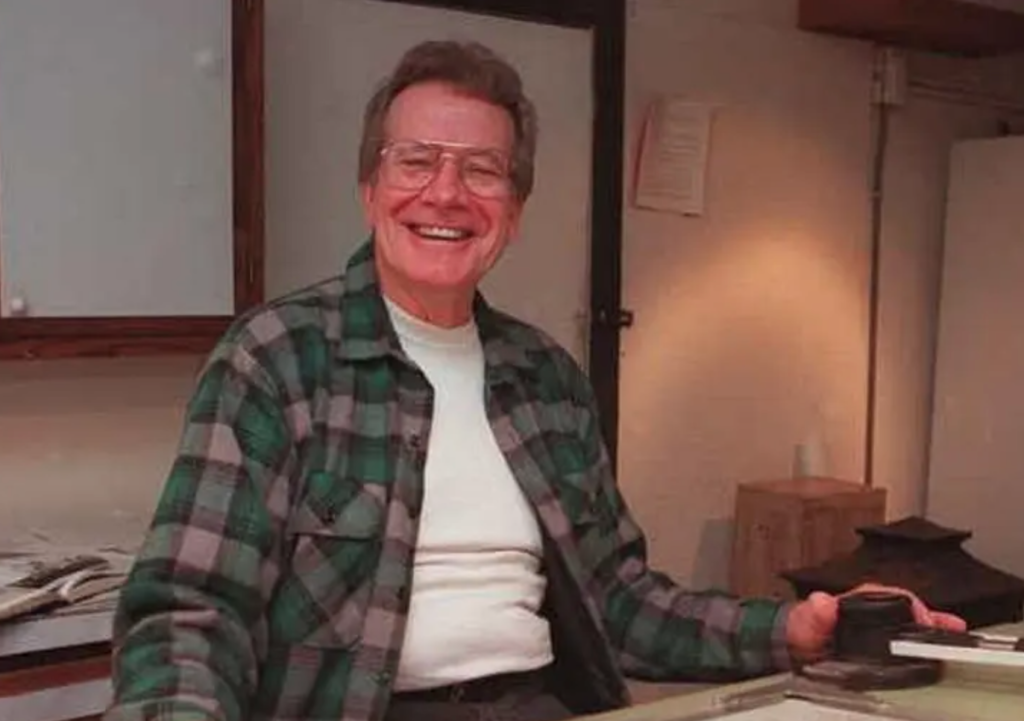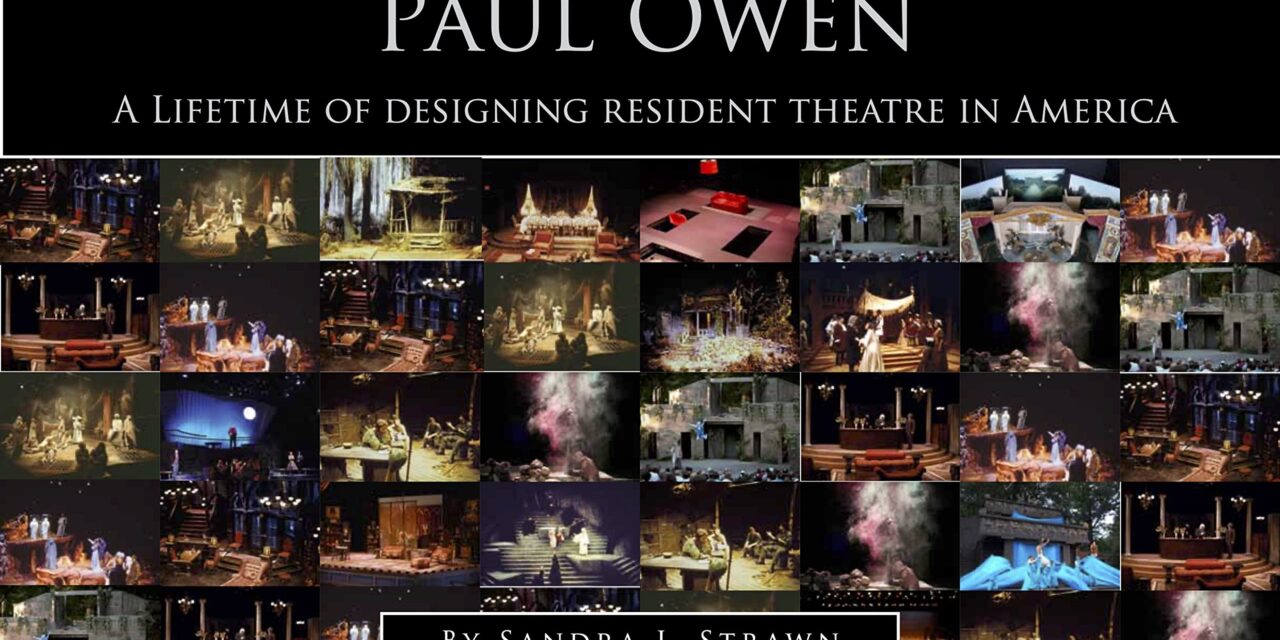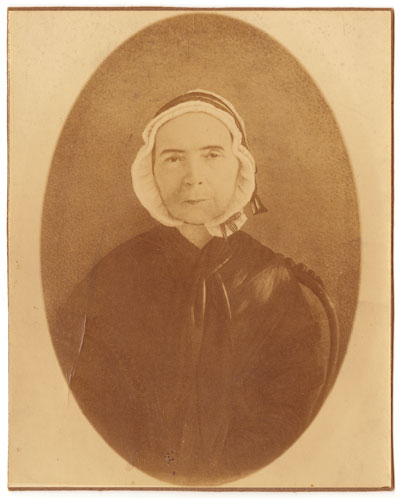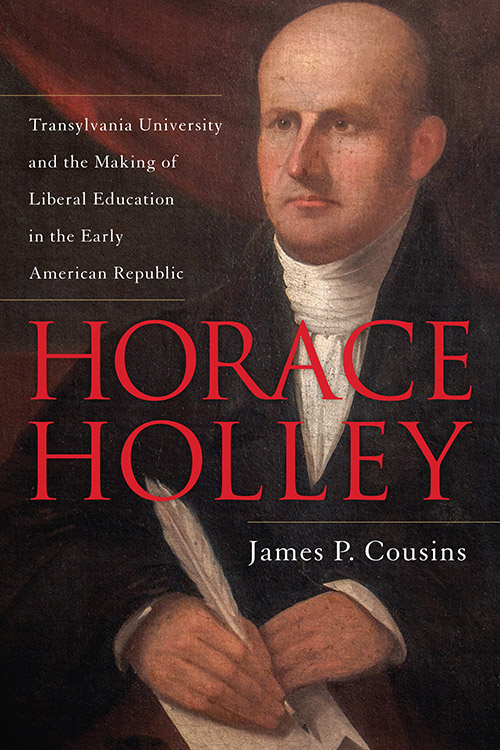Paul Owen: A Lifetime of Designing Resident Theatre in America
By Sandra J. Strawn
Hardcover 324 pages
$67.99
A review by Keith Waits
Entire contents are copyright © 2023 by Keith Waits. All rights reserved.
In The Mex Theatre in April 2012, Louisville-based theatre designer and director Steve Woodring interviewed the legendary regional theatre artist Paul Owen for a small but grateful audience. Owen had several printed enlargements to complement the dialogue, photographs of varying quality illustrating an illustrious career known for its visual ingenuity and high level of craft. When I reached out to Actors Theatre of Louisville for digital images for use in my intended article on Owen’s interview, there were none to be had.
My disappointment that a lifetime of exemplary and influential work was not being sufficiently recorded and cataloged for posterity is thoroughly assuaged by Sandra J. Strawn’s book, “Paul Owen: A Lifetime of Designing Resident Theatre in America.”
Strawn, author of The Properties Director’s Handbook: Managing a Prop Shop for Theatre, and Professor and Head of Production for the Theatre department at UW-Milwaukee, is a contemporary of Owen with her own inestimable reputation. She worked with Owen during his long tenure at Actors Theatre, and her intimate knowledge of the person is reflected in the fulsome and reflective text, while the work is represented in a generous supply of photographs, sketches, and schematics of the set designs that made Owen’s reputation. The book is a celebration of a life that excavates much deeper than anecdote and memory but also qualifies as an academic text that could easily earn a place on syllabi for university-level theatre design classes all over the world. It is both a handsome coffee table book and an invaluable academic text.
As a writer, Strawn lets the generous supply of imagery deliver the style and color and keeps the language straightforward and unobtrusive. The structure is chronological, charting Owen’s depression-era birth in rural Texas, an upbringing dominated by women in his family, and his first steps into professional theatre after studying at Wharton County Community College and the University of Houston. Owen’s early life lacks the strife or tragedy that has become the cliche of an artist’s formative years. He appears to have lived a well-adjusted existence with a bounty of family and friends.
Why he is worth the time and energy devoted to him here is two-fold. Owen’s professional coming-of-age coincides with the growth of regional theatre in the United States, and he works for two iterations of the legendary Alley Theatre in Houston before coming to Actors Theatre of Louisville in the late 1960’s. As theatre outside of the metropolitan American cities came into it’s own, Paul Owen was one of the handful of creative individuals defining what was possible in the crucial Resident Theatre movement.
Strawn delineates this point by taking the time to establish the history before examining the work. She fills in brief sketches on Margo Jones, pioneer of resident theatre, and Nina Vance from The Alley Theatre while also providing a glossary of theatre terms. While such foundational exercises might seem rudimentary in a book most likely to be picked up by theatre professionals and college students, I like that the volume is thorough enough so our appreciation of its subject never lacks for context; it is as accessible to the novice as it is edifying to the expert.
And the work. So much work. The years at The Alley Theatre were followed by almost 40 years as Resident Set Designer at Actors Theatre of Louisville, where he designed somewhere in the neighborhood of 200 plays. Certainly the Humana Festival of New American Plays, which in and of itself annually constituted what would for most companies a season’s worth of plays, is a meaningful factor in this accumulated total. And this is before tallying any outside commissions and the work he did in his last years for Louisville’s Kentucky Shakespeare.
To study the dozens of color and black & white photographs is a a kind of theatre design porn. Strawn has subtitled her book, “A Memoir and Selected Portfolio”, but the visual material seems exhaustive, and the sweep and range of the space and extensive detail seem of another age because they are. Many of the sets would break the budget of almost any contemporary company, and one canot help but note how fully realized spaces become less frequent in his later work. Even in the halcyon days at ATL, Owen often got by on ingenuity born of ignorance to achieve uncommon effects on a shoestring budget. In one famous story, he used an inexpensive spray foam to coat the entire multi-level performance area, not realizing it would give off unpleasant fumes. 22 hours of constant forced ventilation by a series of large fans were required for each 2 hour performance to be safely executed.
Owen outlived the time of such risk and abandon, less able to take such leaps of daring as he became a venerable institution. I suspect he would have hated that term, prefering to think of himself as a working artist until the very end, but it indicates that this book does more than document the career of one person. In documenting and celebrating Paul Owen, the author has captured the essential truths of a key time in the history of theatre in North America.
Paul Owen (1935-2021)

Keith Waits is a native of Louisville who works at Louisville Visual Art during the days, including being the host of Artists Talk with LVA on WXOX 97.1 FM / ARTxFM.com, but spends most of his evenings indulging his taste for theatre, music and visual arts. His work has appeared in LEO Weekly, Pure Uncut Candy, TheatreLouisville, and Louisville Mojo. He is now Managing Editor for Arts-Louisville.com.





